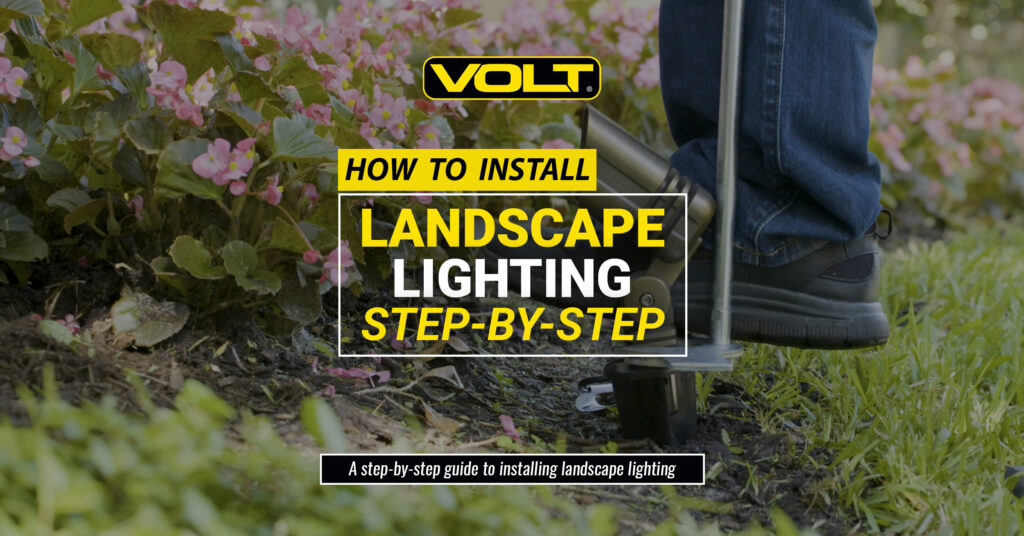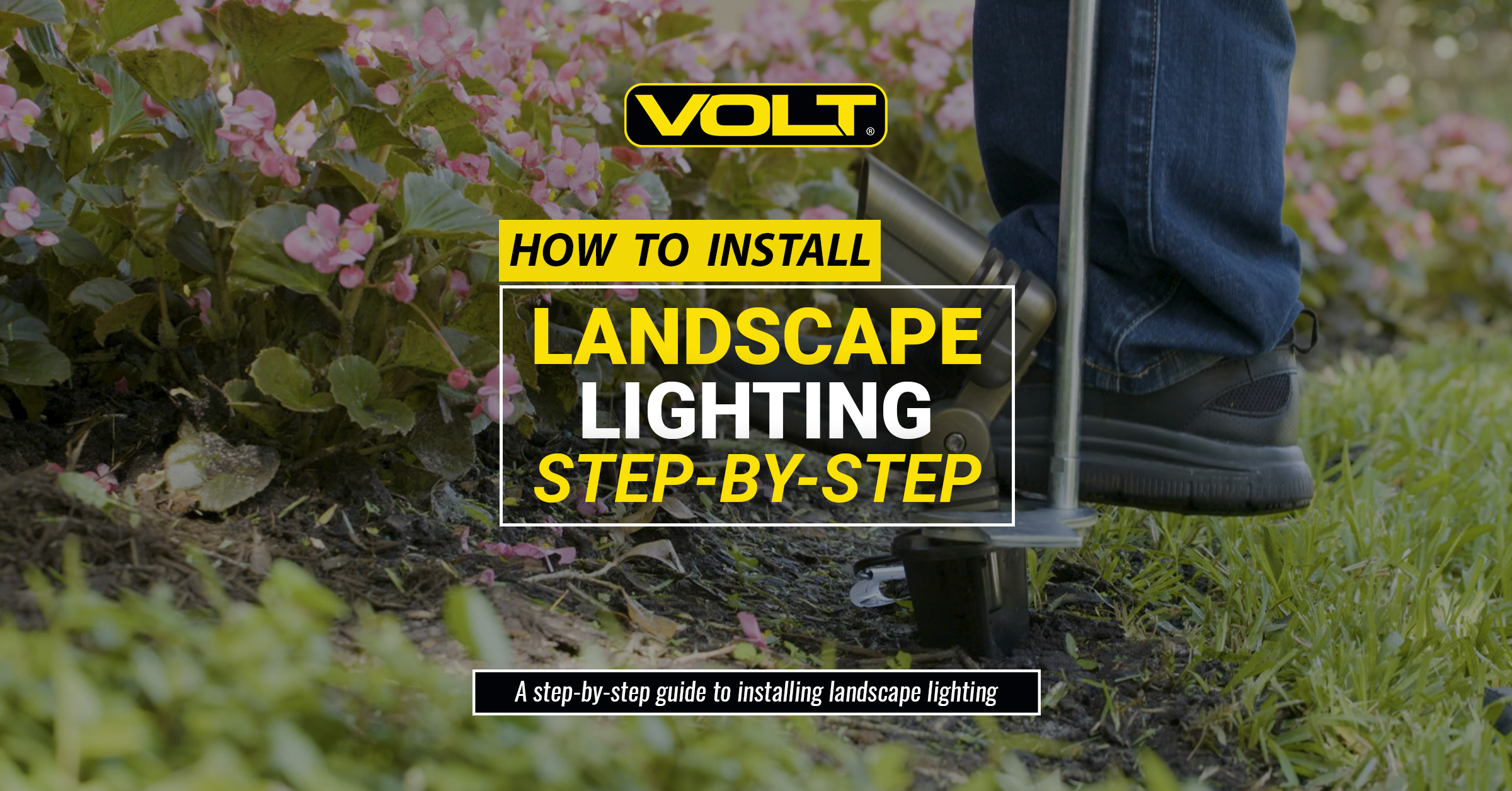
Illuminate Your Outdoors: A Comprehensive Guide on How to Install Landscape Lighting
Landscape lighting not only enhances the aesthetic appeal of your property but also adds a layer of security and safety. Knowing how to install landscape lighting can transform your outdoor spaces, making them more inviting and functional after dark. This comprehensive guide will walk you through each step of the process, from planning and design to installation and maintenance, ensuring your landscape lighting project is a success.
Planning Your Landscape Lighting Design
Before you even think about digging or wiring, careful planning is crucial. This stage involves evaluating your property, identifying focal points, and determining the type of lighting you want to achieve.
Assess Your Property
Start by walking around your yard at night. Notice the areas that are dark and potentially hazardous. Identify architectural features, trees, or garden beds you want to highlight. Consider pathways, patios, and decks that could benefit from improved visibility.
Define Your Lighting Goals
What do you hope to accomplish with your landscape lighting? Are you primarily focused on security, aesthetics, or both? Common goals include:
- Security: Illuminating walkways, entrances, and vulnerable areas.
- Aesthetics: Highlighting architectural details, trees, and water features.
- Functionality: Enhancing outdoor living spaces for evening enjoyment.
Choose the Right Lighting Fixtures
The market offers a wide variety of landscape lighting fixtures, each designed for specific purposes. Here are some popular options:
- Path Lights: Low-level lights that illuminate walkways and driveways.
- Spotlights: Focused beams of light used to highlight specific features.
- Floodlights: Broad beams of light that cover large areas.
- Uplights: Lights that shine upwards, emphasizing trees or architectural elements.
- Downlights: Lights that shine downwards, creating a soft, ambient glow (often mounted under eaves or branches).
- Well Lights: Recessed lights that are installed in the ground, providing subtle illumination.
Consider Lighting Techniques
Different lighting techniques can create different effects. Experiment with these techniques to achieve your desired look:
- Silhouetting: Placing a light behind an object to create a dramatic silhouette.
- Washing: Using a broad beam of light to evenly illuminate a wall or fence.
- Grazing: Positioning a light close to a textured surface to emphasize its details.
- Moonlighting: Simulating moonlight by placing a downlight high in a tree.
Selecting the Right Landscape Lighting System
There are two primary types of landscape lighting systems: low-voltage and line-voltage. Understanding the differences is crucial for making the right choice for your project.
Low-Voltage Lighting
Low-voltage systems are the most popular choice for residential landscape lighting. They operate at 12 volts, which is safer than line-voltage systems. Low-voltage systems require a transformer to convert the standard 120-volt household current to 12 volts. They are easier to install and maintain, making them ideal for DIYers.
Pros:
- Safer to install and work with.
- Easier to install, often DIY-friendly.
- More energy-efficient.
- Lower risk of electric shock.
Cons:
- Requires a transformer.
- Light output may be slightly less powerful than line-voltage systems.
- Voltage drop can be an issue with long wire runs.
Line-Voltage Lighting
Line-voltage systems operate at the standard 120-volt household current. They are more powerful and can provide brighter light over longer distances. However, they are more dangerous to install and require a higher level of electrical expertise. Line-voltage systems typically require a licensed electrician for installation.
Pros:
- Brighter light output.
- No transformer required.
- Less susceptible to voltage drop.
Cons:
- More dangerous to install.
- Requires a licensed electrician for installation.
- Higher energy consumption.
- Greater risk of electric shock.
Solar Landscape Lighting
Solar landscape lighting is an environmentally friendly option that uses solar panels to charge batteries during the day, which then power the lights at night. These systems are easy to install since they don’t require wiring, but their performance depends on the amount of sunlight they receive.
Pros:
- Easy to install, no wiring needed.
- Environmentally friendly.
- No electricity costs.
Cons:
- Performance depends on sunlight availability.
- Brightness may be less consistent.
- Batteries need replacement periodically.
Gathering Your Tools and Materials
Before you start the installation process, gather all the necessary tools and materials. This will save you time and frustration later on.
Essential Tools
- Shovel or Spade: For digging trenches to bury wires.
- Wire Strippers: For removing insulation from wires.
- Wire Connectors: For joining wires together.
- Voltage Tester: To ensure the power is off before working on electrical connections.
- Screwdriver: For installing fixtures.
- Hammer: For driving stakes into the ground.
- Measuring Tape: For accurate placement of fixtures.
- Level: To ensure fixtures are installed straight.
- PVC Cutter (if using PVC conduit): For cutting PVC pipes.
- Multimeter: For testing voltage and continuity.
Necessary Materials
- Landscape Lighting Fixtures: Choose the fixtures that best suit your design.
- Low-Voltage Transformer (for low-voltage systems): Select a transformer with sufficient wattage for your lighting load.
- Low-Voltage Wire: Use direct burial-rated wire.
- Wire Connectors: Waterproof connectors are recommended.
- PVC Conduit (optional): For protecting wires in high-traffic areas.
- Landscape Staples: For securing wires to the ground.
- Timer or Photocell (optional): For automatic operation.
- Gravel or Sand: For drainage around fixtures.
Step-by-Step Installation Guide
Now that you have planned your design and gathered your tools and materials, it’s time to start the installation process. Follow these steps carefully to ensure a safe and successful installation.
Step 1: Install the Transformer
Choose a location for the transformer that is close to an outdoor electrical outlet and protected from the elements. Mount the transformer securely to a wall or post. Connect the transformer to the outlet, following the manufacturer’s instructions.
Step 2: Lay Out the Wiring
Plan the route for your low-voltage wire. Dig shallow trenches (6-8 inches deep) along the planned route. Use PVC conduit to protect wires in areas where they may be exposed to damage, such as driveways or walkways.
Step 3: Connect the Fixtures
Connect the low-voltage wire to each lighting fixture using waterproof wire connectors. Make sure the connections are secure and properly insulated. If using spotlights or uplights, position them carefully to achieve the desired effect.
Step 4: Bury the Wires
Once all the fixtures are connected, bury the wires in the trenches. Use landscape staples to secure the wires to the ground every few feet. Backfill the trenches with soil and compact it gently.
Step 5: Test the System
Turn on the transformer and test the system. Check each fixture to ensure it is working properly. If any fixtures are not working, check the connections and wiring.
Step 6: Adjust and Fine-Tune
Adjust the position of the fixtures to achieve the desired lighting effect. Fine-tune the angles and direction of the lights to highlight specific features. Consider using a timer or photocell to automate the system.
Safety Precautions
Safety should be your top priority when installing landscape lighting. Always follow these precautions:
- Turn off the power: Before working on any electrical connections, turn off the power at the circuit breaker.
- Use waterproof connectors: Protect connections from moisture to prevent electrical shorts.
- Bury wires properly: Bury wires deep enough to prevent damage from lawnmowers or gardening tools.
- Wear safety glasses: Protect your eyes from debris while digging and wiring.
- Consult a professional: If you are not comfortable working with electricity, hire a licensed electrician.
Maintenance Tips
To keep your landscape lighting system working properly, follow these maintenance tips:
- Clean fixtures regularly: Remove dirt and debris from the lenses to maintain brightness.
- Check wiring: Inspect the wiring for damage or corrosion.
- Replace bulbs: Replace burned-out bulbs promptly. Consider upgrading to LED bulbs for longer life and energy efficiency.
- Adjust fixtures: Adjust the position of the fixtures as needed to maintain the desired lighting effect.
- Trim vegetation: Trim any vegetation that may be blocking the light.
Troubleshooting Common Issues
Even with careful installation and maintenance, you may encounter some common issues with your landscape lighting system. Here are some troubleshooting tips:
- Lights not working: Check the power supply, wiring connections, and bulbs.
- Dim lights: Check the transformer voltage and wiring for voltage drop.
- Flickering lights: Check the wiring connections and transformer.
- Transformer humming: This is normal, but excessive humming may indicate a problem.
Enhancing Your Outdoor Space with Landscape Lighting
Learning how to install landscape lighting is a valuable skill that can significantly enhance your property’s beauty, security, and functionality. By following this comprehensive guide, you can transform your outdoor spaces into inviting and enjoyable environments. Remember to prioritize safety, plan carefully, and choose the right lighting system and fixtures for your specific needs. With a little effort, you can create a stunning landscape lighting design that will impress your neighbors and enhance your outdoor living experience. Consider reading more about [See also: Choosing the Right Landscape Lighting Fixtures] and [See also: Landscape Lighting Maintenance Tips] for further information.
Investing in landscape lighting not only increases the value of your property but also provides a safer and more enjoyable outdoor environment for you and your family. Take the time to plan your project carefully, choose the right materials, and follow the installation steps diligently. With the right approach, you can create a landscape lighting system that will bring years of enjoyment and enhance the beauty of your home. Understanding how to install landscape lighting also allows you to make informed decisions when hiring professionals, ensuring you get the best possible service and results.
By carefully considering your needs and preferences, you can design a landscape lighting system that perfectly complements your home and lifestyle. So, gather your tools, plan your design, and get ready to transform your outdoor spaces with the magic of light. Knowing how to install landscape lighting empowers you to take control of your home’s ambiance and create a welcoming and secure environment for years to come.

